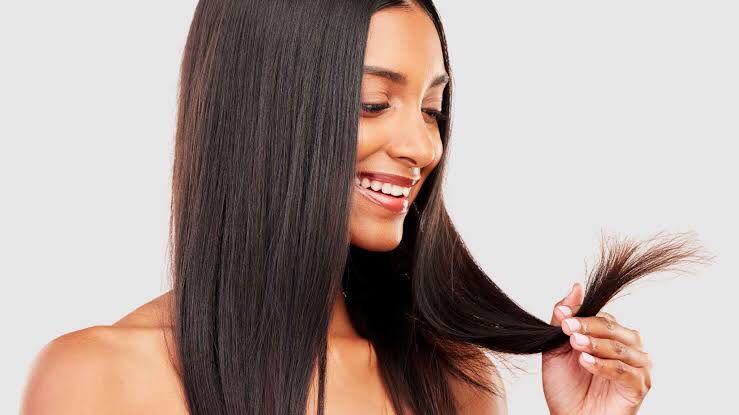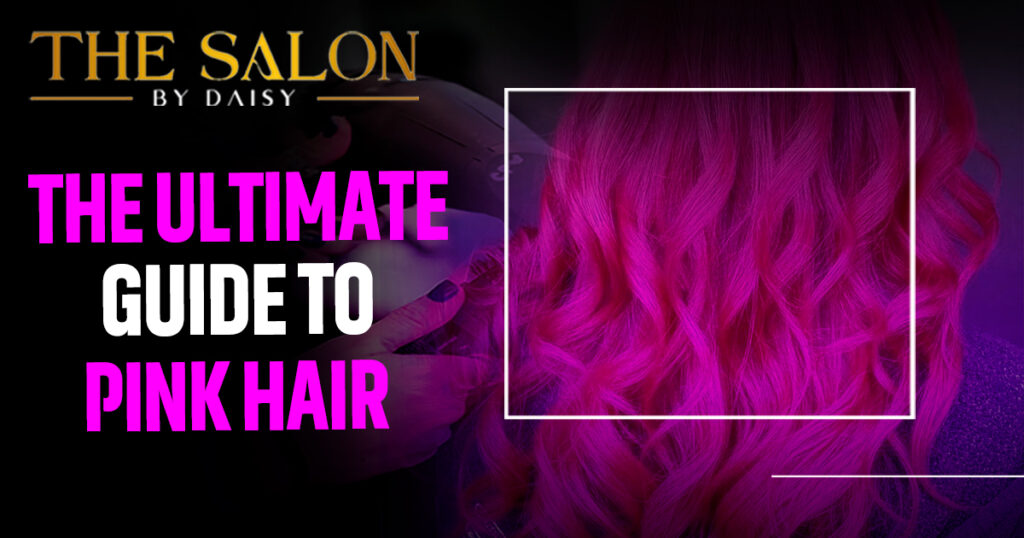Sometimes, women want to change their hairstyle. It could be for the season, to follow a trend, or if living in a cosmopolitan town like Brighton, just to try something different.
One popular choice is to dye their hair a vibrant pink. But before making this bold statement, many women have questions about their hair.
In this article, we will discuss how to create the perfect pink hair style and answer any hesitant questions you may have. Daisy, a stylist and hairdresser in Brighton for almost 20 years, will guide you on going pink or even returning to your natural colour.
What Is Pink Hair?
Pink hair is achieved by involving a combination of science and creativity, using hair bleach and colour toners.
Typically, the first step is to lighten the hair to a pale blonde shade. This is important because it provides a blank canvas for the pink dye to show up more vibrantly.
Lightening the hair involves using bleach or other lightening agents to strip away the natural pigment.Once the hair is lightened, it is ready for the pink dye.
Pink dyes come in various shades and formulations, ranging from pastel pinks to bold magentas. These dyes contain pigments that adhere to the hair shaft and create the desired color.
The intensity of pink achieved can depend on several factors such as the starting color of your hair, the brand and formulation of the dye used, and how long you leave it on your hair. It’s important to note that different individuals may achieve slightly different shades of pink due to these variables.
To maintain vibrant pink hair, it is essential to use colour-safe shampoos and conditioners specifically formulated for colored hair.
Additionally, regular touch-ups may be necessary as the colour gradually fades over time.
How To Dye Your Hair Pink At Home
If you’re not local to our hairdressers in Brighton, or you simply want to try yourself, we have put a guide to how to dye your hair pink at home.
What you’ll need:
- Bleach
- Toner
- Pink Colour
- Bowl and tint brush for mixing your products
- Crocodile clips for clipping up your hair sections
- An old t-shirt or bleach proof towel to protect your clothes
How to prepare:
Read the instructions provided with all products.
Always do a strand test for bleach kits and a strand and sensitivity test for toner kits and bright colours.
STEP 1: BLEACH
First, lighten your hair using the bleach kit. Start with the mid-lengths and ends – the heat from your scalp makes the first 2 cm of your hair develop more quickly, so you need to give the rest a head start.
Divide your hair into four sections and secure it with crocodile clips.
Use a tint brush to section out thin slices of hair and apply your bleach mixture liberally to the hair starting an inch away from the scalp.
Gently massage it in as you go to make sure every hair is coated in bleach.
Work through your whole head. Slice. Bleach. Massage. Repeat!
Let the bleach develop for 20-40 minutes, and then do your roots with the same slicing technique. Set a timer for 30-45 minutes.
Check the hair every 10 minutes by gently scraping the bleach away from your roots with the edge of your tint brush to check the colour and condition of your hair.
Once you’re done, rinse until the water runs clear, then shampoo twice and gently towel dry. Now it’s time to tone!
STEP 2: TONER
The toner kit neutralises brassy bleach yellows and balances out your blonde for a clean base for your pink colour.
Centre-part your towel dried hair and apply the toner mixture to the warmest/yellowest bits of your bleached hair first, then do the rest.
Remember to saturate and smoosh!
Let your hair develop for 10-20 minutes, then rinse with cool water and condition with a reincarnation mask for added nourishment.
STEP 3: COLOUR
The pink turns bleached and toned hair to a hot pink! If you prefer a more pastel colour, dilute the pink dye with conditioner before applying.
Divide your hair back into four sections and clip.
Paint the pink onto your hair, starting at the roots in each quarter section using your hands or tint brush.
Make sure you saturate your strands and smoosh in the colour as you go for the most even result.
Leave to develop for 30 minutes.
Rinse with cool water and style.
Can Pink Hair Easily Return To Its Natural Colour?
Although pink hair can be fun for a while, you may soon want to go back to your natural colour. If you want to reverse back from pink, you might be tempted to reach for the bleach. Firstly, you can try a gentle vitamin C treatment to remove the surface dye.
If there’s still a lot of pink dye left on your hair, spread a colour stripping product on your strands, which should get rid of most of the dye. You can also use a darker brown colour as long as it is done correctly.
Conclusion
Pink hair is certainly fun. However, as we love our hair, it is important you choose the correct shade that best suits you. If you are in Brighton and would like it carried out by a professional colourist, please visit our hairdressers in Brighton, The Salon by Daisy.


